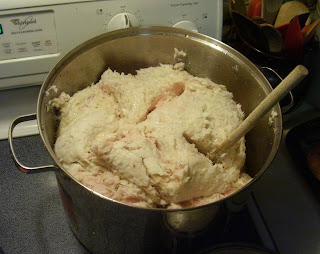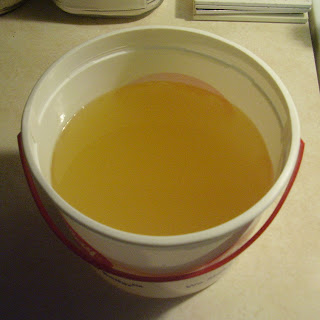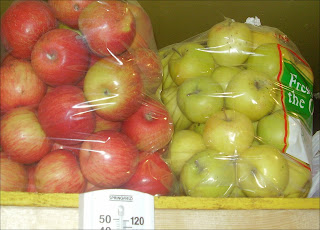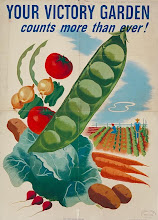Last fall hubby and I splurged and went to a bed and breakfast in Stillwater, MN. It was called The Elephant Walk B&B, and it was very nice. The best thing about it was the plate of goodies inside your room when you arrived -- various yummy artisan cheeses, grapes, pistachios, apples, and delicious homemade crackers.
Those crackers were so good, I asked the innkeeper for the recipe, and she happily obliged. I grabbed a piece of paper out of my purse and scribbled down the directions as she talked. I thought I had it all down. As you'll see below, I was wrong.
Tonight I decided to make the crackers. We're having company this weekend, and I thought the crackers would be nice to serve for an afternoon snack. The recipe started off with 'make a stiff bread dough.' So I made a white bread dough, and let my six-year-old help with the kneading. He took great delight in pounding the dough as hard as he could with his little fists.
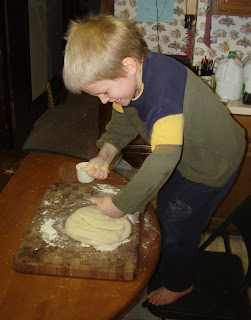
It was here that I realized I was missing a vital piece of information. Do I let the dough rise, or not? I thought about it for awhile, and figured that since I was told to use a bread dough, then I should follow through with bread dough basics, and let it rise. So, I did.
After that step, my recipe said, 'using a pasta machine, roll it thick first and then as thin as you can.' So I did, and spread the pieces over my kitchen table. I only rolled a third of the dough, as my table could only hold that many pieces at once.
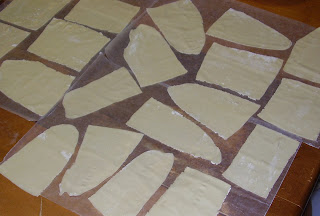
Then my recipe said, 'Place on parchment paper, on a cookie sheet. Brush with egg whites and sprinkle sesame seeds over top. ' So I did.

Then, 'bake in a 425 oven for a few minutes until lightly browned.' So, I did.

Whoa! Wait! What's going on here? What are those big air bubbles doing in my crackers? There aren't supposed to be any air bubbles! The B&B crackers were lovely and flat and evenly browned. If I get air bubbles, the crackers will puff up and the tops of the bubbles will get burned before the flat parts get browned.

Which is exactly what happened. Rats. What do I do now? I can't 'unrise' the dough. Too late for that. I still had a bunch of dough left, and I didn't want to start over. The only thing I could think of was to beat and flatten and punch the dough to within an inch of its life. Then use a rolling pin and flatten it some more. Then send it through the pasta roller. So, that's what I did.

The resulting crackers were a lot better. I also reduced the heat to 350, which helped even out the browning. Only a few smaller air bubbles. Not as good as the B&B's, but good enough to serve to guests. Note to self: don't let the dough rise!
I went to the grocery store today looking for some artisan cheeses to serve with the crackers, but was sorely disappointed. There was about thirty different brands and varieties of cheddar, Colby, hard mozzarella and Monterrey Jack. In desperation I bought the only non-block cheese I could find -- some soft Swiss and Edam. Never had Edam before, so we'll see what that tastes like.
Maybe if I have time tomorrow I'll whip up a batch of fresh mozzarella before our company arrives around lunchtime. Right after I help hubby clean the house, bake a birthday cake, make deviled eggs, plan party games, take care of the livestock, and do a bunch of laundry.
Yeah, right!
